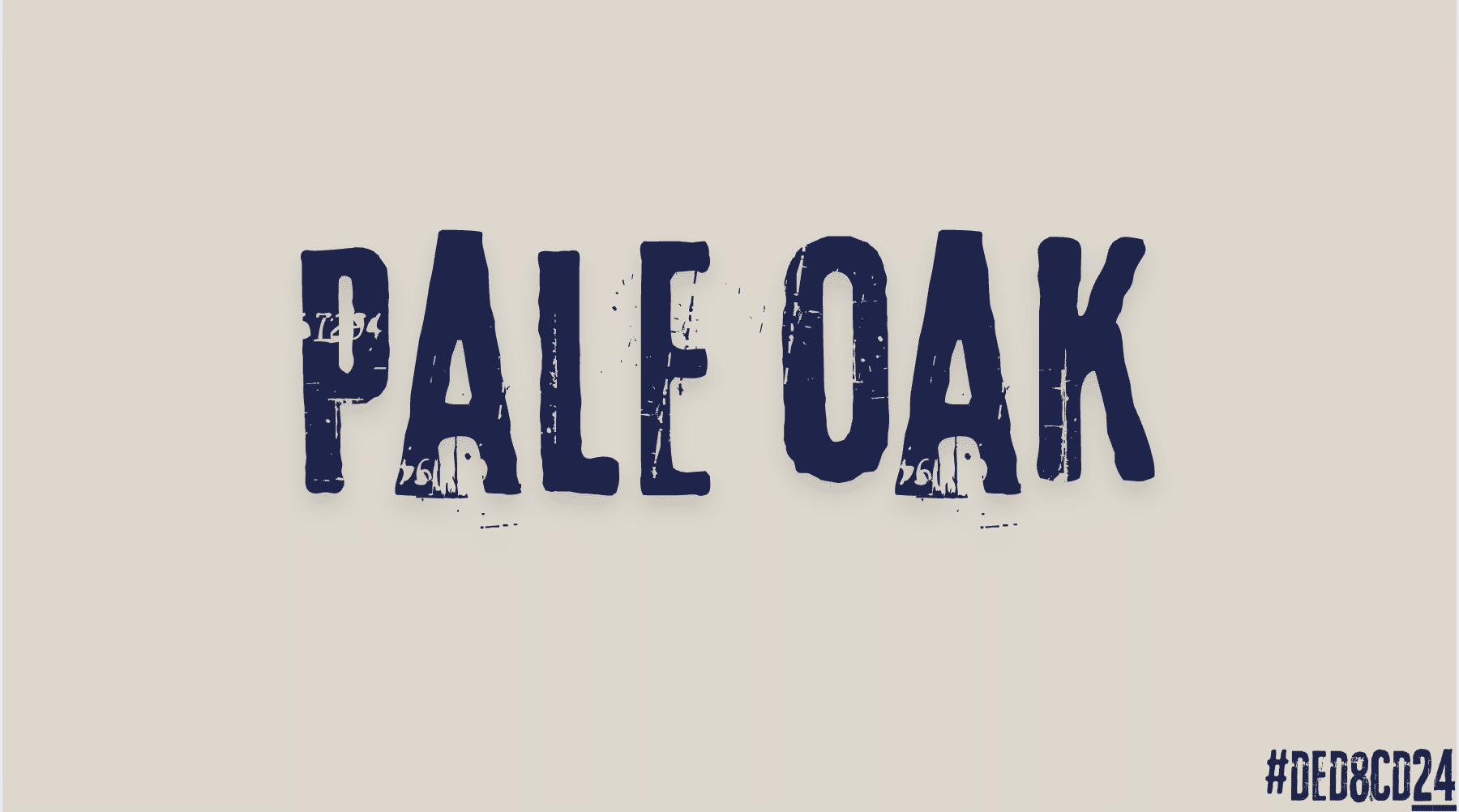Picking paint colors can feel like solving a puzzle. You want something that looks good and also works with your lighting. Have you heard about Pale Oak? Many homeowners choose it, but do you know why?
The key is in the LRV (Light Reflectance Value) of Pale Oak. This number matters more than most people think when choosing paint colors.
Pale Oak is between gray and beige on the color wheel. It’s soft and muted and changes with the light throughout the day.
We’ll break down what the Pale Oak LRV means for your rooms. You’ll learn which spaces work best with this color and what other colors pair well with it. Could this quiet, modest shade be the answer to your paint problems?
What is Pale Oak Color?
Pale Oak is a soft, light neutral paint color that sits between beige and gray. Many people call it a “greige” tone. It has a warm base with subtle beige hints that make rooms feel cozy and welcoming.
This color has grown popular among homeowners for good reasons:
- It works in almost any room
- It pairs well with many other colors
- It doesn’t feel too bold or too boring
- It suits many design styles from modern to traditional
Pale Oak has an LRV (Light Reflectance Value) of 69. This number tells you how much light the color reflects. With a score of 69, Pale Oak reflects quite a bit of light while still having enough depth to show up on walls.
Why does LRV matter? It helps you know how the color will look in your space:
- In bright, sunny rooms: Pale Oak will look lighter and softer
- In darker rooms: It will look slightly deeper but still reflect enough light
- Throughout the day: The color shifts subtly as light changes
When choosing a paint color, the LRV helps you pick the right tone for your space. Pale Oak’s high LRV makes it a smart choice for small rooms with little natural light. The color will help the room feel bigger and brighter.
Testing Pale Oak in your lighting is key. Paint a sample board and move it around your room at different times of day. This helps you see how the LRV works with your actual lighting before you commit.
How does Pale Oak Influence Your Space in Lighting?

Pale Oak may look simple at first glance, but it has subtle undertones that change how it feels in a room. These undertones react to lighting, nearby colors, and even furniture.
The main undertone in Pale Oak is taupe – a mix of brown and gray. This gives the color its warm, soft feel. But there’s more hiding beneath the surface that affects how it looks in your home. Colors never exist alone they interact with everything around them. Pale Oak shows different sides of itself based on:
- The direction your windows face
- The time of day
- Your light bulb types (warm vs cool)
- Other colors in the room
Pale Oak has a taupe base that can show hints of pink or purple in certain lights. This is why the color feels so warm and cozy compared to cooler grays.
| Lighting Condition | How Pale Oak Appears | Best Room Uses |
|---|---|---|
| North-facing rooms | More pink/taupe is visible | Bedrooms, dining rooms |
| South-facing rooms | More neutral, less pink | Living rooms, offices |
| Morning light | Cooler, more gray | Kitchens, bathrooms |
| Evening light | Warmer, more beige/pink | Living spaces, bedrooms |
| Warm bulbs (2700K) | Pink undertones enhance | Cozy spaces, reading nooks |
| Cool bulbs (4000K+) | More gray, less pink | Work areas, kitchens |
When Does Pale Oak Look Pinker?
The pink tones come out strongest in rooms with little natural light. If you notice too much pink, try changing your light bulbs to cooler tones or balance with blue-toned items in the room.
Some spaces hide the pink undertones completely. In bright, south-facing rooms, Pale Oak often looks more like a true greige with less pink showing through.
Best Ways to Use Pale Oak in Your Home
Pale Oak fits many spots in your home thanks to its soft, warm look. This shade works across room types and settings because it sits in a middle ground.
It’s not too light or too dark and has a hint of warmth without being yellow. Let’s look at where Pale Oak works best in your home and how to use it well.
1. Living room
Living rooms often benefit from Pale Oak’s warm feel. The color creates a base that makes the space feel put together but not stuffy. It helps the room feel open while still giving the walls some color. Pale Oak walls let your furniture and art be the stars of the show.
Pro Tip: In living rooms, try Pale Oak on three walls with a slightly darker accent color on one wall. This adds depth without making the room feel smaller.
2. Bedroom

Pale oak gives bedrooms a calm vibe. The color isn’t too cold or too warm, which helps create a peaceful space. It works with both light and dark bedding. Unlike stark white, it has enough color to feel cozy at night under lamp light.
Pro Tip: For a sleep-friendly bedroom, pair Pale Oak walls with warm white bedding and soft textures. Add blackout curtains in a shade slightly darker than the walls for visual balance.
3. Kitchen

With pale oak, kitchens look clean but not clinical. The hint of warmth makes the space feel lived-in and friendly. It pairs well with both light and dark cabinets. The color also hides minor marks better than pure white, which helps in busy kitchens.
Pro Tip: If you use Pale Oak on kitchen walls, try adding wood tones and plants to bring out the color’s natural, warm side.
How to Sample and Test Pale Oak in Your Space?

Getting the right paint color is tricky. What looks good on a tiny paint chip might not work on your walls. This is why testing Pale Oak in your actual space is so important before you buy gallons of paint.
The way Pale Oak looks changes depending on lighting, time of day, and what’s in your room. A color test helps you see these changes before you commit.
Testing also saves you money in the long run. The cost of a few samples is much less than having to repaint a room because the color wasn’t what you expected.
The Best Method for Sampling
The most helpful way to test Pale Oak is with peel-and-stick samples. These are large paint swatches on removable backing. Companies like Samplize offer these handy tools that let you try colors without opening a paint can.
Peel-and-stick samples work better than paint samples because:
- They show the true color right away (no waiting for paint to dry)
- You can move them to different walls and rooms
- They don’t leave a mess
- They show a larger area than a paint swatch
When using peel-and-stick samples of Pale Oak, place them on all walls of the room you plan to paint. The color will look different on north-facing walls versus south-facing ones.
For the best color match, check that the sample uses real paint from the brand you plan to use. Some sample services use printed colors that might not match exactly. Stick with samples made with actual paint for the most true-to-life test.
What to Watch for During Testing
When testing Pale Oak, pay close attention to how it changes throughout the day. The morning light will show the color differently from the evening light.
Look for these key things when testing:
- Does the color turn too pink at certain times?
- Does it seem too light or too dark at any point?
- How does it look next to your furniture and floors?
- Does it feel too warm or too cool?
The most common surprise with Pale Oak is how it can shift to show pink undertones in some lights. This isn’t bad if you like that look, but it helps to know it might happen.
Also, check how the color looks with your fixed items, such as floors, countertops, and large furniture. Since these are the things you won’t be changing, the paint needs to work with them.
Final Thoughts
Pale Oak works best in homes that need a soft, neutral background that feels warm without being too yellow or too gray. This color shines in spaces with natural light, making rooms feel bigger and more open.
If you like colors that change slightly throughout the day and offer a subtle depth, Pale Oak might be your perfect match. It pairs well with white trim, wood tones, and many accent colors.
Remember that paint colors look different in each home. Get a sample and test it on your walls before making your final choice. Watch how it looks at various times of day.
The right paint color makes a big space feel cozy and a small space feel roomy. Pale Oak strikes this balance well for many homes, giving you a flexible backdrop for your style.
Frequently Asked Questions(FAQs)
Is Pale Oak Good for a Dark Room?
Pale Oak works well in dark rooms. Its high LRV helps bounce the limited light around, making the space feel brighter and more open.
Does Pale Oak Look Purple?
Pale Oak doesn’t look purple. It’s a light greige (gray-beige) with warm undertones that can show hints of green in some lights, but not purple.



